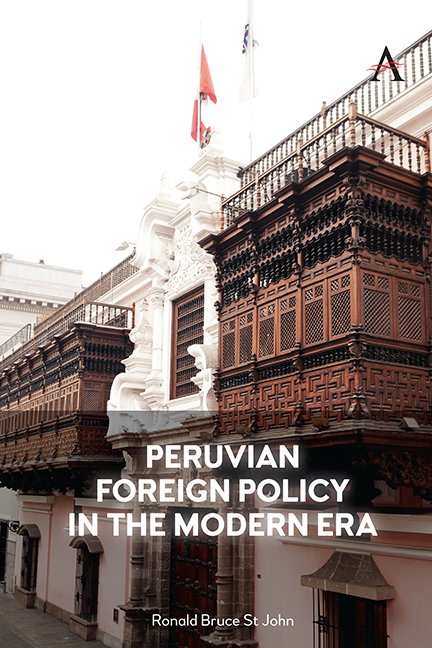Book contents
- Frontmatter
- Dedication
- Contents
- List of Figures
- Acknowledgments
- Abbreviations
- Map
- 1 Introduction
- 2 Alberto Kenya Fujimori, 1990–2000 and Valentín Paniagua Corazao, 2000–2001
- 3 Alejandro Celestino Toledo Manrique, 2001–2006
- 4 Alan García Pérez, 2006–2011
- 5 Ollanta Humala Tasso, 2011–2016
- 6 Pedro-Pablo Kuczynski Godard to Francisco Rafael Sagasti Hochhausler, 2016–2021
- 7 José Pedro Castillo Terrones To Dina Ercilia Boluarte Zegarra, 2021–2023
- 8 Conclusions
- Works Cited
- Index
6 - Pedro-Pablo Kuczynski Godard to Francisco Rafael Sagasti Hochhausler, 2016–2021
Published online by Cambridge University Press: 28 February 2024
- Frontmatter
- Dedication
- Contents
- List of Figures
- Acknowledgments
- Abbreviations
- Map
- 1 Introduction
- 2 Alberto Kenya Fujimori, 1990–2000 and Valentín Paniagua Corazao, 2000–2001
- 3 Alejandro Celestino Toledo Manrique, 2001–2006
- 4 Alan García Pérez, 2006–2011
- 5 Ollanta Humala Tasso, 2011–2016
- 6 Pedro-Pablo Kuczynski Godard to Francisco Rafael Sagasti Hochhausler, 2016–2021
- 7 José Pedro Castillo Terrones To Dina Ercilia Boluarte Zegarra, 2021–2023
- 8 Conclusions
- Works Cited
- Index
Summary
Throughout most of the 2016 presidential campaign, Keiko Fujimori was the front runner with Pedro-Pablo Kuczynski Godard, a wealthy investment banker with considerable international financial experience, occupying third or fourth place in most polls. Kuczynski was well known in Peruvian political circles, having served as an economic adviser and manager of the central bank during the first Belaúnde Terry administration and both finance minister and prime minister in the Toledo administration. Kuczynski's prospects improved in March when the candidates polling in second and fourth place were disqualified. Fujimori won the first round with 39.82 percent of the vote with Kuczynski in second place with 20.98 percent (Horler and Cazarez 2016). In the second round, Kuczynski benefitted from the endorsement of the leftist politician Verónika Mendoza, who placed third in the first round, and a strong anti-fujimorista animus among the electorate. Kuczynski won the second round by the narrow margin of 42,597 votes (Crabtree and Durand 2017, 186).
Rise and Fall of Kuczynski
On 28 July 2016, President Kuczynski appointed Víctor Ricardo Luna Mendoza, a career diplomat who had served as ambassador to the United States (1992–99) and Great Britain (2006–2010), as minister of foreign affairs. In a succinct overview of Peruvian foreign policy, Ambassador Luna highlighted the key components of the foreign policy of the Kuczynski administration. With neighboring Bolivia, Brazil, Chile, Colombia, and Ecuador, he planned to continue binational cabinet meetings in conjunction with targeted programs for each country with the intent to encourage development in the borderlands. On the regional level, he prioritized the Pacific Alliance, noting blocs like ALBA, CAN, CELAC, and UNASUR often were competitive instead of complementary in their promotion of integration and development. Elsewhere, Luna recognized the need for institutional change at the United Nations, arguing the best way to effect change was for Peru to take a leadership role. As a former ambassador to the United States, he also recognized the importance of maintaining good relationships with the White House even as Peru continued to expand its ties with China and the European Union. Finally, Luna promised to better serve Peruvians abroad by continuing efforts to improve efficiency and reduce bureaucracy at Peruvian embassies and consulates (Luna Mendoza 2016).
- Type
- Chapter
- Information
- Peruvian Foreign Policy in the Modern Era , pp. 51 - 62Publisher: Anthem PressPrint publication year: 2023



